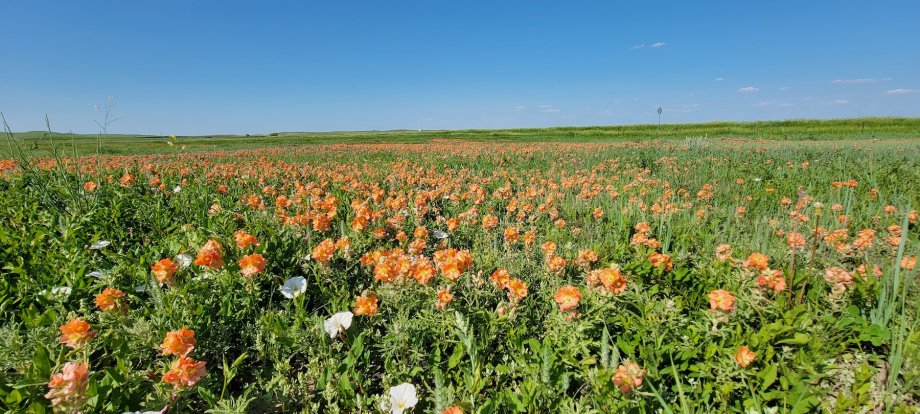
Native plants are crucial to preserving the unique and important biodiversity of the northern Great Plains. However, invasive species have wreaked havoc on what were once pristine grasslands in South Dakota, North Dakota and Nebraska.
The federal government has taken notice of this issue and has begun efforts to restore the native grasses and wildflowers in the many national parks of the northern Great Plains. To facilitate this effort, Lora Perkins, associate professor in South Dakota State University's Department of Natural Resource Management, is working with the National Park Service on a three-year, $900,000 project.

Perkins and her research team will build on ongoing federally-funded research efforts and established capacity through SDSU's Native Plant Initiative—a project led by Perkins that began in 2019.
Historically, the northern Great Plains had an abundance of native grasses and wildflowers. These provided the foundation for insects, pollinators, birds and other wildlife. When European settlers moved into the area during the 1800s, invasive plants began sprouting and spreading. While some efforts were made to remove the invasive plants, eventually the grasslands, wetlands and woodlands in the region were all heavily impacted. Along with historic drought conditions, scientists have blamed the removal of deep-rooted native grasses as one of the underlying causes of the 1930s Dust Bowl—one of the worst man-made ecological disasters in modern U.S. history.
Today, efforts are focused on restoring native species.
"There's a lot of cultural heritage with having these plants that historically were very abundant and have gone away," Perkins said. "A lot of them are unique species that only occur here in our region. We should be embracing them and celebrating them."
In response, SDSU began a research program—the Native Plant Initiative—to provide research and educational opportunities to students interested in the conservation and restoration of native plant species. The program also encourages the use of native plants by small family farmers as alternative crops.
"So few grasslands remain that we need to maximize the biodiversity of native plants in every area possible," Perkins said. "This new reality requires a more thorough understanding of native plant restoration and production than currently exists for native plants in the northern Great Plains."
National parks, monuments and memorials
In South Dakota, the National Park Service maintains the following national parks, memorials and monuments: Badlands, Jewel Cave, Wind Cave and Mount Rushmore. Each of these places were once home to native grasses and wildflowers but now have many invasive species.
The research team's project will determine what efforts are needed to restore native species for each specific location.
The surface of Jewel Cave, for example, encompasses 1,274 acres of open grasslands and ponderosa pine forests in southwestern South Dakota. The monument was home to a rich diversity of native grasses and wildflowers. However, in 2000, a wildfire ripped through over 80,000 acres surrounding Jewel Cave. In the following years, non-native species, such as the Canada thistle and leafy spurge, began sprouting and spreading.
While National Park Service staff will deploy pest management strategies to attempt to remove the invasive species, Perkins and her research team will work to restore native grasses and wildflowers at Jewel Cave.
"We are going to harvest seeds, we are going to study how to get the seeds to germinate, and then find the best way to store them," Perkins said. "We're going to give those seeds to farmers so we can get a lot more of those seeds, and then we will put them in the parks for restoration."
The same efforts will occur in the national parks, monuments and memorials of North Dakota, Nebraska and eastern Wyoming.
"All of this work is geared toward better restoration in the parks and this information will help improve all of our natural areas" Perkins said.
After multiple field seasons spent evaluating seeds and developing increased seed production protocols, the National Park Service will have the necessary information for the restoration of 60 native species for the parks, monuments and memorials of the northern Great Plains.
- Contact:
- Telephone number: 605-688-6161
Republishing
You may republish SDSU News Center articles for free, online or in print. Questions? Contact us at sdsu.news@sdstate.edu or 605-688-6161.

